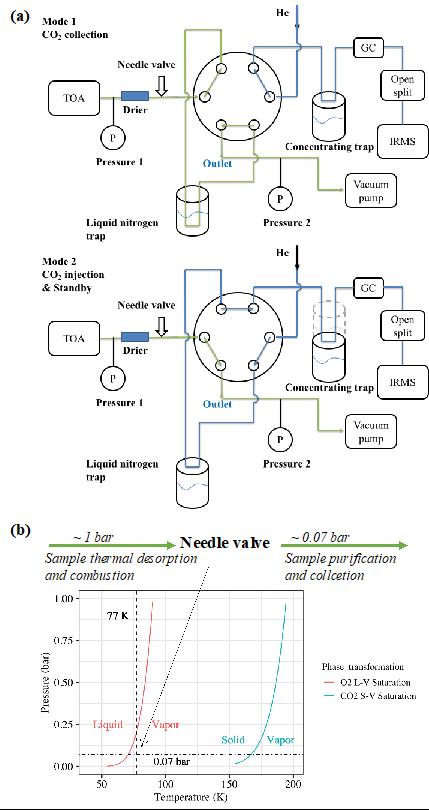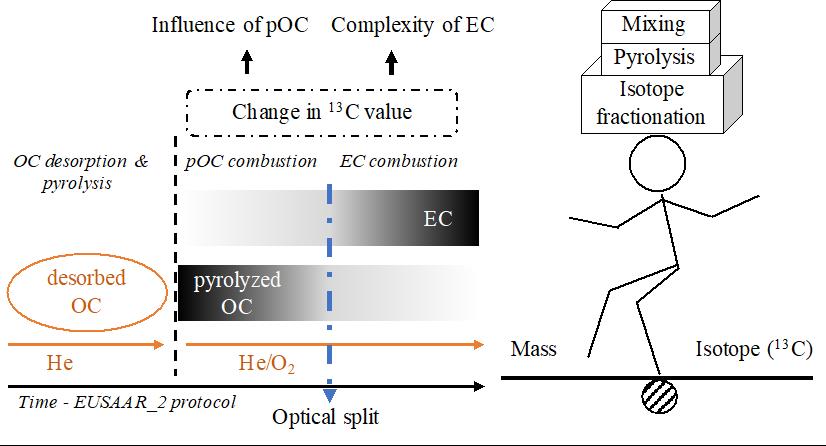Yao, P., Ni, H., Paul, D., Masalaite, A., Huang, R.J.*, Meijer, H.A. and Dusek, U.*: An automated method for thermal-optical separation of aerosol organic/elemental carbon for 13C analysis at the sub-μgC level: A comprehensive assessment. Sci. Total Environ., 804, 150031, 2022.
Carbon isotopes are increasingly applied in aerosol source apportionment and atmospheric physical chemistry research. Effective separation of aerosol organic carbon (OC) and elemental carbon (EC) becomes more important for 13C analysis due to their different sources and significantly different 13C signatures, and the trace samples make 13C analysis more difficult.
A research group led by Prof. HUANG Rujin from the Institute of Earth Environment (IEE) of the Chinese Academy of Sciences developed an automated method for thermal-optical separation of aerosol OC/EC for 13C analysis at the sub-μgC level. The effectiveness of various OC/EC separations for 13C analysis was comprehensively evaluated.
The method combines a Sunset thermal-optical analyzer and an isotope ratio mass spectrometer (IRMS) via a custom-built automated separation, purification, and injection system. OC, EC, and other specific fractions from aerosol filter samples can be separated and analyzed automatically for 13C based on thermal-optical protocols (EUSAAR_2 in this study) at sub-μgC levels. The main challenges in isolating EC for 13C analysis are the possible artifacts during OC/EC separation, including the premature loss of EC and the formation of pyrolyzed OC (pOC) that is difficult to separate from EC. Since those artifacts can be accompanied with isotope fractionation, their influence on the stable isotopic composition of EC was comprehensively investigated with various test compounds. The results show that the thermal-optical method is relatively successful in OC/EC separation for 13C analysis. The method was further tested on real aerosols samples. For biomass-burning source samples, (partial) inclusion of pOC into EC has negligible influence on the 13C signature of EC. However, for ambient samples, the influence of pOC on the 13C signature of EC can be significant, if it is not well separated from EC, which is true for many current methods for measuring 13C on EC. A case study in Xi’an, China, where pOC is enriched in 13C compared to EC, shows that this can lead to an overestimate of coal and an underestimate of traffic emissions in isotope-based source apportionment.
This method, published in Science of the Total Environment, will be applied to more accurate aerosol carbon isotope source apportionment.

Fig.1 (a) Schematic of the Sunset thermal-optical analyzer – isotope ratio mass spectrometry system (TOA-IRMS), transfer interface, and operation modes. (b) Pressure control for online combustion and purification based on O2 Liquid-Vapor saturation and CO2 Solid-Vapor saturation.

Fig.2 Schematic illustration of aerosol thermal-optical OC/EC separation for 13C analysis.

